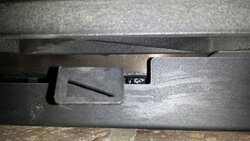jatoxico
Minister of Fire
All good info. I'll just add that IMO it's useful to read the fire. If you have dark orange, black tipped flames I will feed in a bit more air if the flames are bright I feel comfortable to keep shutting down until I get what I want.So, my conclusion is that closing down all the way (at least on my Regency i2400) does not completely cut off the supply of air and, if done while maintaining good secondary flames, can be beneficial for an overnight burn.
The thing I will need to keep an eye on now is how the chimney looks come January when I'll do my "mid-season" clean-out. I did not see smoke when I had the air down all the way but probably best to keep tabs on this approach.
You could also use the tinfoil trick on your thermo if you want to know what your peak temp was while you were sleeping.


